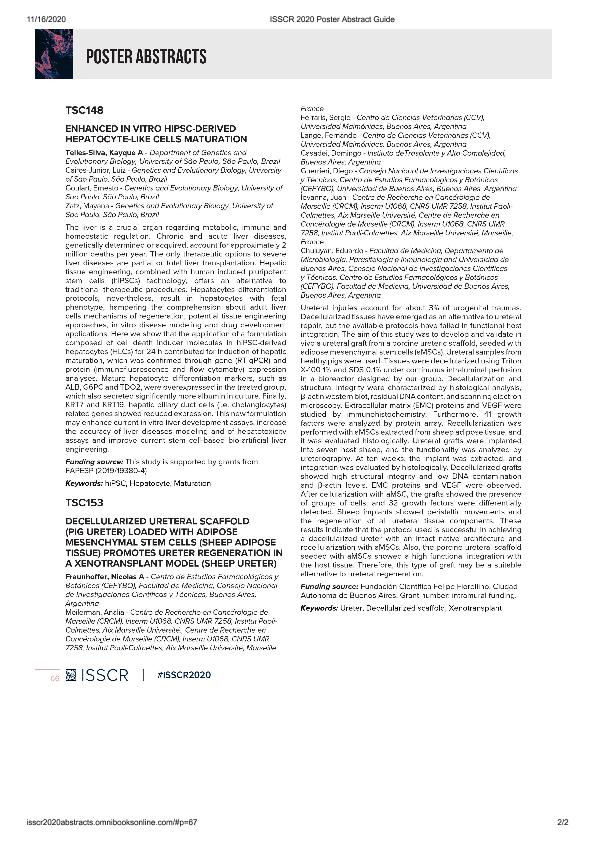Evento
Decellularized ureteral scaffold (pig ureter) loaded with adipose mesenchymal stem cells (sheep adipose tissue) promotes ureter regeneration in a xenotransplant model (sheep ureter)
Fraunhoffer, Nicolas A; Meilerman, Analia; Ferraris, Sergio; Lange, Fernando; Casadei, Domingo; Guerrieri, Diego ; Iovanna, Juan; Chuluyan, Hector Eduardo
; Iovanna, Juan; Chuluyan, Hector Eduardo
 ; Iovanna, Juan; Chuluyan, Hector Eduardo
; Iovanna, Juan; Chuluyan, Hector Eduardo
Tipo del evento:
Reunión
Nombre del evento:
International Society for Stem Cell Research Annual Meeting
Fecha del evento:
23/06/2020
Institución Organizadora:
International Society for Stem Cell Research;
Título del Libro:
International Society for Stem Cell Research
Editorial:
Internactional Society for Stem Cell Research
Idioma:
Inglés
Clasificación temática:
Resumen
Ureteral injuries account for about 3% of urogenital traumas. Decellularized tissues have emerged as an alternative to ureteral repair, but the available protocols have failed in functional host integration. The aim of this study was to develop and validate in vivo a ureteral graft from a porcine ureteric scaffold, seeded with adipose mesenchymal stem cells (aMSCs). Ureteral samples from healthy pigs were used. Tissues were decellularized using Triton X-100 1% and SDS 0.1% under continuous intraluminal perfusion in a bioreactor designed by our group. Decellularization and structural integrity were characterized by histological analysis, β-actin western blot, residual DNA content, and scanning electron microscopy. Extracellular matrix (EMC) proteins and VEGF were studied by immunohistochemistry. Furthermore, 41 growth factors were analyzed by protein array. Recellularization was performed with aMSCs extracted from sheep adipose tissue, and it was evaluated histologically. Ureteral grafts were implanted into seven host sheep, and the functionality was analyzed by ureterography. At ten weeks, the implant was extracted, and integration was evaluated by histologically. Decellularized grafts showed high structural integrity and low DNA contamination and β-actin levels. EMC proteins and VEGF were observed. After cellularization with aMSC, the grafts showed the presence of groups of cells, and 32 growth factors were differentially detected. Sheep implants showed peristaltic movements and the regeneration of all ureteral tissue components. These results indicate that the protocol used is successful in achieving a decellularized ureter with an intact native architecture and recellularization with aMSCs. Also, the porcine ureteral scaffold seeded with aMSCs showed a high functional integration with the host tissue. Therefore, this type of graft may be a suitable alternative to ureteral regeneration.
Palabras clave:
URETER
,
BIOINGENIERIA
,
REGENERACION
Archivos asociados
Licencia
Identificadores
Colecciones
Eventos(CEFYBO)
Eventos de CENTRO DE ESTUDIOS FARMACOLOGICOS Y BOTANICOS
Eventos de CENTRO DE ESTUDIOS FARMACOLOGICOS Y BOTANICOS
Citación
Decellularized ureteral scaffold (pig ureter) loaded with adipose mesenchymal stem cells (sheep adipose tissue) promotes ureter regeneration in a xenotransplant model (sheep ureter); International Society for Stem Cell Research Annual Meeting; Estados Unidos; 2020
Compartir



